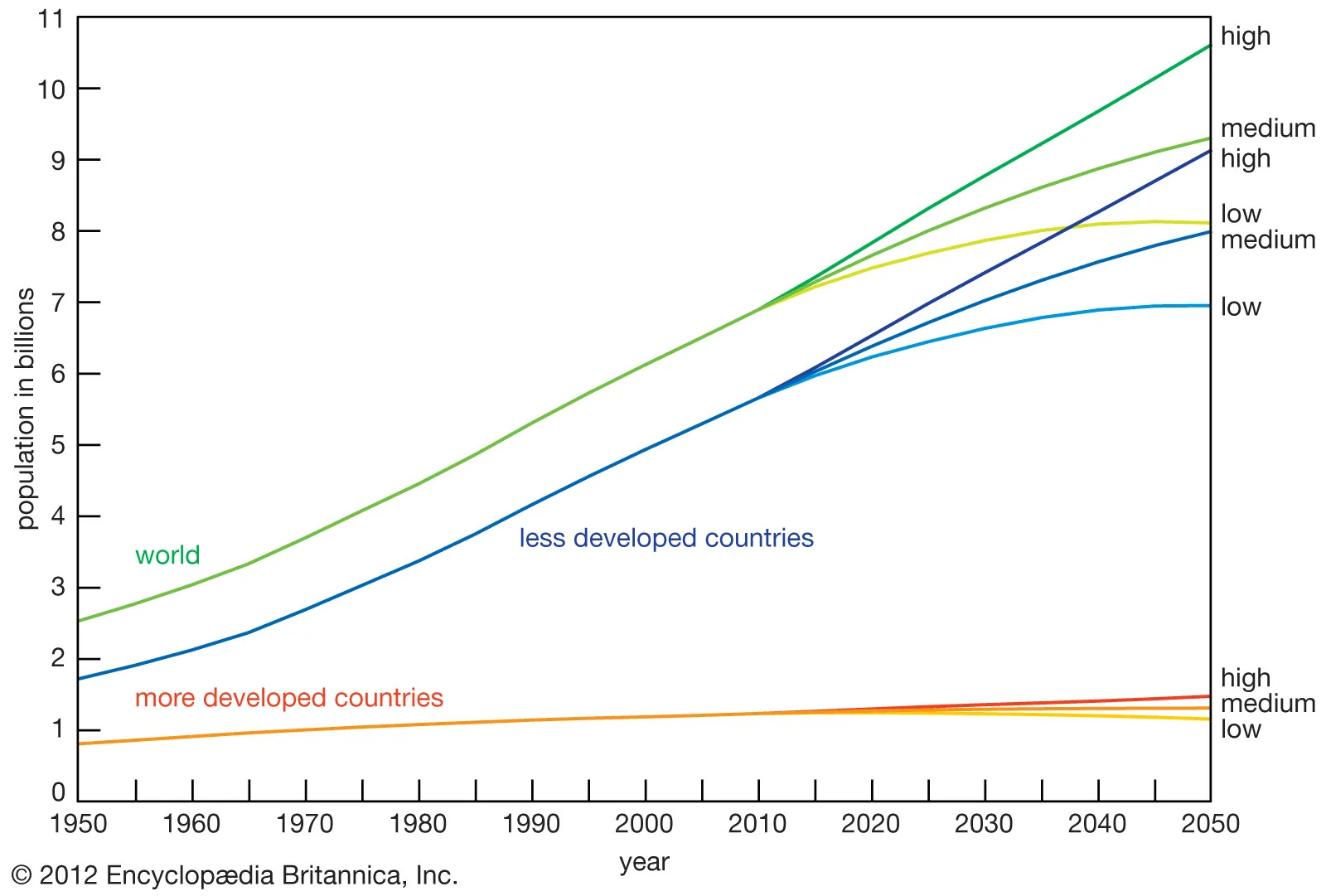
Population projection is a fascinating field of study that can provide valuable insights into the future demographics of a region or country. By analyzing current population trends, birth rates, death rates, and migration patterns, experts can make informed predictions about how a population is likely to change over time.
In this article, we will explore 9 surprising facts about population projection that may challenge your preconceived notions and shed light on the dynamics of population growth and decline. From the impact of fertility rates on population size to the effects of migration on demographic shifts, these facts will help you understand the complexities of population projection and its significance in various fields, including urban planning, public health, and policy-making.
So, let’s dive in and discover some fascinating and perhaps unexpected aspects of population projection.
Key Takeaways:
- The world population is expected to reach 9.7 billion by 2050, with Asia remaining the most populous continent and Africa’s population doubling, presenting both challenges and opportunities for the future.
- Population growth affects food security and urban areas will continue to grow, emphasizing the need for sustainable urban planning and enhanced agricultural practices to meet the demands of a growing population.
The world population is projected to reach 9.7 billion by 2050.
According to population projections, the global population is estimated to increase from its current 7.9 billion to a staggering 9.7 billion by the year This rapid growth has significant implications for various aspects of society, including resources, infrastructure, and the environment.
Asia is projected to remain the most populous continent.
Population projections indicate that Asia will continue to hold the title of the most populous continent in the world. With its diverse cultures, countries, and rapid urbanization, Asia’s population is estimated to reach 5.3 billion by 2050.
Europe’s population is expected to decline.
Contrary to the global population growth trend, Europe is projected to experience a decline in its population. Factors such as low birth rates, an aging population, and emigration contribute to this decline, with projections indicating a decrease from 745 million to 707 million by 2050.
Africa’s population is set to double by 2050.
Africa, the second most populous continent, is projected to undergo a significant population increase. The current population of 1.3 billion is estimated to double to 2.5 billion by This population surge presents both challenges and opportunities for the continent in terms of economic development and infrastructure.
The aging population is a global concern.
Population projections highlight the alarming trend of global aging. The proportion of people aged 65 and above is projected to increase from 9% in 2020 to 16% by This demographic shift poses various challenges, including healthcare costs, pension provisions, and social welfare systems.
Urban areas will continue to grow.
Population projections suggest that urbanization will persist, with more people migrating to cities. By 2050, it is estimated that 68% of the global population will reside in urban areas. This growth brings about the need for sustainable urban planning, adequate infrastructure, and efficient resource management.
Population growth affects food security.
The increasing global population puts significant pressure on food production and availability. Population projections emphasize the importance of enhancing agricultural practices, investing in technology, and ensuring sustainable food systems to meet the demands of a growing population.
Population projection models rely on various factors.
Population projections utilize data on birth rates, death rates, migration patterns, and other demographic indicators to estimate future population trends. These models help policymakers, urban planners, and researchers make informed decisions regarding resource allocation, infrastructure development, and social programs.
Population projection accuracy is subject to uncertainty.
While population projection models provide valuable insights, they are not without limitations. Factors such as unexpected events, changes in fertility rates, and migration patterns can introduce uncertainty. Nonetheless, population projections serve as essential tools for understanding and planning for the future.
Conclusion
Population projection is a fascinating subject that provides valuable insights into the future of our society. The nine surprising facts presented in this article highlight how important it is to understand and analyze population trends. From the impact of aging populations to the challenges of urbanization, these facts shed light on the complex dynamics that shape our world.
By studying population projection, policymakers, researchers, and individuals can gain a better understanding of the forces that shape our societies. This knowledge allows us to make informed decisions about resource allocation, infrastructure development, and social programs.
As the global population continues to grow and evolve, staying informed about population projection becomes increasingly crucial. By anticipating future changes, we can work towards building sustainable and inclusive communities that can thrive in the face of demographic shifts.
FAQs
1. What is population projection?
Population projection refers to the estimation or forecast of future population trends based on a variety of factors such as birth rates, death rates, migration patterns, and fertility rates.
2. Why is population projection important?
Population projection helps to assess the future needs and demands of a society, allowing policymakers and organizations to plan and allocate resources effectively. It also provides insights into areas such as healthcare, education, housing, and infrastructure development.
3. How are population projections calculated?
Population projections are calculated using mathematical models and statistical analysis to predict how populations will change over time. These models take into account various factors such as birth and death rates, migration patterns, and socioeconomic indicators.
4. Can population projections be accurate?
While population projections are based on the best available data and methodologies, they are still subject to a degree of uncertainty. External factors such as unforeseen events or shifts in social and economic circumstances can influence the accuracy of projections.
5. How are population projections used?
Population projections are used by governments, businesses, and organizations to plan for future needs, allocate resources, develop policies, and address potential challenges related to demographics and population growth.
6. Are population projections only for countries?
No, population projections can be done at various levels, including national, regional, and local levels. They can be used to assess population changes within specific areas or communities.
7. Are population projections static or dynamic?
Population projections are dynamic and subject to change as new data becomes available. They require continuous monitoring and adjustment to reflect the latest demographic trends and patterns.
8. Can population projections be influenced by government policies?
Government policies can indeed influence population projections. For example, policies related to immigration, healthcare, family planning, and social programs can have a significant impact on population growth or decline.
9. How can individuals benefit from population projections?
Individuals can benefit from population projections by gaining insights into future demographic trends. This information can help them make informed decisions about career choices, investments, retirement planning, and other aspects of their lives.
Was this page helpful?
Our commitment to delivering trustworthy and engaging content is at the heart of what we do. Each fact on our site is contributed by real users like you, bringing a wealth of diverse insights and information. To ensure the highest standards of accuracy and reliability, our dedicated editors meticulously review each submission. This process guarantees that the facts we share are not only fascinating but also credible. Trust in our commitment to quality and authenticity as you explore and learn with us.


